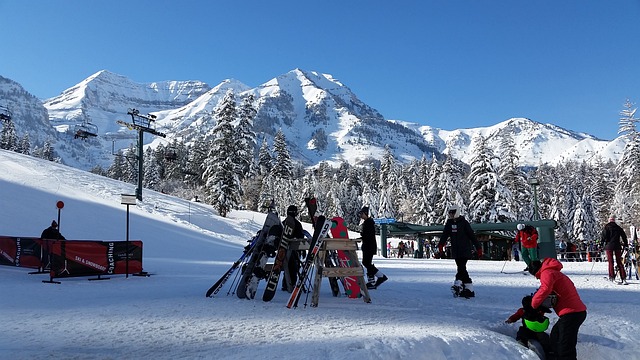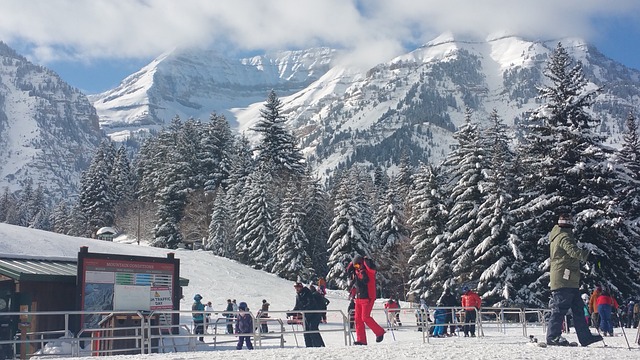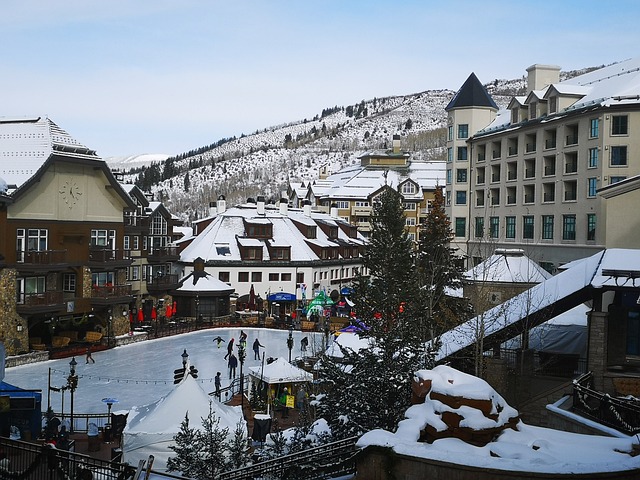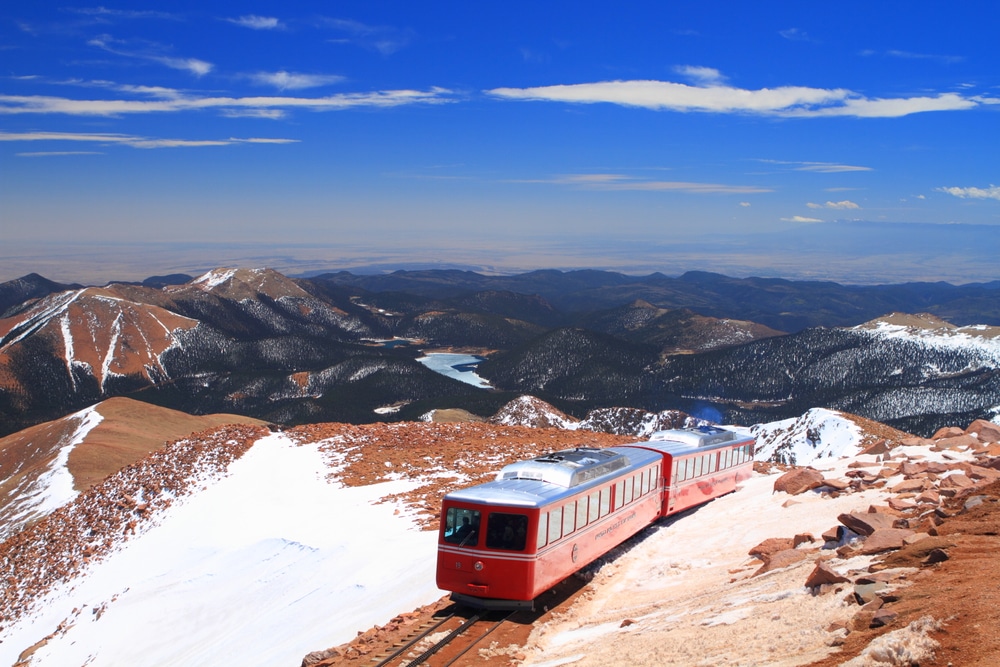Posted on 28 December 2023
When looking at what time of year is best to buy ski property in the USA, the ski season is only a fraction of the factors to consider. Nestled amidst snow-covered peaks and pristine landscapes, ski properties in the USA offer a home and a lifestyle. Ask any real estate expert; whether you’re an avid skier or seeking a winter retreat, investing in property in a ski town is an exciting venture.
But investing in a ski house is not just about acquiring real estate. Choosing the right time to make this significant investment significantly impacts overall experiences and potential returns. In this article, we’ll explore the intricacies and pinpoint the best time of year to buy in the USA.
The Best Time to Buy Ski Property in the USA

The Allure of Ski Property
Ski resort towns across the United States attract millions of visitors yearly, offering exceptional skiing and snowboarding opportunities and vibrant après-ski and nightlife scenes. As demand for winter recreation continues to grow, so does the appeal of owning a ski house from people who contact a real estate professional or research the median home price. Whether it is a cosy cabin in the Rockies or a luxurious condo in the Northeast, ski real estate provides many lifestyle choices to escape the mundane and embrace the thrill of winter sports.
Understanding Seasonal Dynamics
Property markets experience fluctuations throughout the year, primarily influenced by seasonal changes, weather conditions, and demand for winter sports. To make informed decisions, delve into the dynamics of each season and the impact on real estate.
Winter Wonderland: Winter months, from December to February, are the peak of ski seasons. Snow enthusiasts flock to ski towns and resorts, creating demand for ski properties. While the demand is high, so are prices, and real estate professionals are kept on their toes. Sellers capitalise on the increased interest in this lifestyle purchase, often setting higher listing prices during this period. However, towns with poor snowfall lack selling power.
The winter months also offer advantages for prospective buyers. With the market buzzing, many properties are available for viewing, allowing buyers to explore various options and make well-informed decisions about their return on investment. Additionally, sellers on the housing market are more motivated to sell, providing potential negotiating opportunities.
The Thaw: As winter gives way to spring, the snow melts, and ski resorts wind down their operations. This transitional period, from March to May, presents unique opportunities for buyers to contact real estate professionals. Sellers who failed to close deals during the winter may become more flexible with pricing, hoping to finalise transactions before the off-season.
Buyers leverage this period to negotiate better deals and secure favourable terms on their financial investment. Additionally, viewing alpine properties during the thaw allows prospective buyers to assess potential weather-related issues.
Off-Season: Summer months, from June to August, mark the off-season for resorts. During this time, skiing takes a backseat, and real estate cools off. Sellers who want a fast sale may offer potential price reductions and attractive financing options.
While skiing isn’t the primary focus during summer, it’s an excellent opportunity for buyers to explore surroundings and assess alpine ski properties without snow-covered landscapes. Additionally, summer months offer more explicit pictures of the year-round appeal, helping buyers make more informed decisions.
Autumn Preparations: Resorts prepare for the upcoming winter season as autumn sets in. September to November is transitional, with sellers gearing up for potential winter sales. While prices aren’t as low as during the off-season, buyers still find attractive deals before peak winter demand.
Autumn is strategic for buyers looking to secure property before the market heats up. Sellers may negotiate, and buyers benefit from the anticipation of winter, often obtaining advantageous financing terms.
Off-Season Bargains: Spring and Summer
- Lower Prices: Spring and summer are considered off-season for resorts. During this time, sellers may be more eager, potentially lowering property prices.
- More apparent Inspection: The absence of snow allows for more thorough property inspections. Buyers can identify any potential issues, ensuring more informed decisions.
- Limited Selection: The off-season may see a reduced inventory of available properties. Buyers might have to compromise on specific preferences due to limited options.
- Less Vibrant Atmosphere: Ski resorts may feel quieter and less lively during the warmer months, potentially making it challenging to envision the winter experience.
Fall Foliage and Early Snow: September to November
- Picturesque Views: Fall foliage adds stunning backdrops, showcasing the natural beauty.
- Early Snowfall: Some resorts experience early snowfall, allowing buyers to witness the transformation into a winter wonderland.
- Transitional Period: Fall is transitional for ski resorts, and property prices aren’t as discounted as in off-seasons.
- Weather Uncertainty: While some resorts may see early snowfall, others may not. Weather conditions are unpredictable during the fall.
Peak Season Excitement: Late Winter and Early Spring
- Experience the Resort: Buying during peak season allows buyers to experience the ski resort at its best. The vibrant atmosphere and the winter sports facilities are in full swing.
- Rental Potential: Properties purchased during the peak season can be used immediately for personal enjoyment or as rental accommodations.
- Higher Prices: Peak season often comes with higher property prices. Sellers are less willing to negotiate, and buyers may face increased competition.
- Limited Availability: Desirable properties may be in high demand, leading to more competitive markets.

Market Trends and Economic Factors
Understanding broader market and economic factors is critical to determining buying time. Several factors influence markets, and being attuned to these dynamics helps buyers make informed decisions.
Interest Rates and Financing Options: Interest rates play a huge role in the affordability of ski properties. Monitoring interest rate trends helps buyers time their purchases to secure lower mortgage rates. Buyers should explore financing options and mortgage packages to find the most favourable terms.
Economic Conditions: The overall economic conditions, both nationally and regionally, impact the property market. Financial stability and growth often increase consumer confidence and buoy the real estate market. Conversely, economic downturns may result in more motivated sellers and potentially lower property prices.
Local Market Trends: Each USA destination has unique market dynamics. Researching market trends, backdoor resorts, property appreciation rates, inventory levels, and historical sales data provides valuable insights. Understanding specific market nuances is essential for making well-informed investment decisions.
Seasonal Discounts and Incentives: Ski resorts and property developers may offer seasonal discounts and incentives to attract buyers during specific times of the year. These could include price reductions, financing perks, or additional amenities. Keeping an eye on such promotions leads to substantial cost savings for buyers.
Factors Influencing the Ski Property Market
Location, Location, Location: The location is vital to value and desirability. Popular ski destinations like Aspen, Vail, and Lake Tahoe often command higher prices due to their prestige, accessibility, and quality of resorts.
Winter Weather Patterns: Snowfall and weather conditions are crucial for potential buyers. Resorts with consistent and reliable snowfall tend to attract more visitors, ensuring steady rental income streams and potential property value appreciation.

Strategic Considerations for Property Buyers
Research and Due Diligence: Regardless of the time of year, thorough research and diligence are paramount. Understand market trends, property values, and reputations of ski resorts. Working with knowledgeable real estate agents specialising in ski properties provides invaluable insights.
Financial Preparedness: Before embarking on the journey of buying property, ensure that you are financially prepared. Consider your budget, potential financing options, and additional costs like taxes, maintenance, and homeowners’ association fees.
Visit During Different Seasons: To gauge a property, visit during different seasons. Experiencing the property in both winter and off-season will provide a comprehensive understanding of the appeal and potential challenges.
Negotiation Skills: Whether you buy during the off-season or peak season, honing your negotiation skills is crucial. Be prepared to make a compelling offer, and don’t hesitate to negotiate terms according to your budget and preferences.

What are the Best Ski Areas to Buy Property in the USA?
Several ski areas in the USA are popular destinations for buying property. Remember that real estate trends change, and popularity may be influenced by factors such as snowfall, accessibility, amenities, and overall appeal.
Aspen is renowned for its world-class skiing, luxurious amenities, and vibrant cultural scene. It attracts both winter sports enthusiasts and those seeking high-end mountain lifestyles. Vail is one of the world’s largest ski resorts, offering extensive terrain. The town is known for its charming alpine village, upscale shops, and upscale real estate options. The Lake Tahoe region offers stunning lake views and access to multiple resorts, making the area desirable for both winter and summer activities.
Jackson Hole is famous for its challenging slopes and breathtaking scenery. The area attracts outdoor enthusiasts with its proximity to Grand Teton and Yellowstone National Parks. Park City Mountain is a year-round destination with a historic downtown and world-class resorts. It gained additional popularity after hosting events during the 2002 Winter Olympics.
Park City Mountain is one of the USA’s largest ski resorts, with over 7,300 acres of skiable terrain. While winter sports are the main draw, Park City Mountain offers year-round activities. Visitors enjoy mountain biking, hiking, zip-lining, and other outdoor pursuits in summer.
Steamboat Springs, often called “Ski Town, USA,” is famous for its friendly atmosphere, hot springs, and diverse winter activities. Sun Valley, a classic destination with a rich history, offers mixed challenging slopes, cultural events, and relaxed mountain lifestyles.
When buying property, research each area’s specific attributes, assess property values and market trends, and consider your lifestyle preferences. Consulting with real estate experts specialising in ski properties provides valuable insights into current market conditions and potential investment opportunities. (Read more about the best mountain towns in the USA.)
Buying a Ski Condo
Budget: Determine how much to spend on a ski condo. Also, consider additional yearly costs like property taxes, maintenance fees, and potential homeowners’ association (HOA) fees. Ongoing costs include local taxes and utility bills.
Ownership Options: Condos often come with different ownership structures, including full ownership, fractional ownership, and timeshares. Understand the implications of each option, considering your usage patterns and long-term goals.
Ski Resort and Surrounding Area: Explore the amenities of the ski resort and surrounding areas. Consider the condo’s proximity to lifts, dining options, shopping, and other attractions. Look into the overall vibe of the resort community.
Homeowners’ Association (HOA.) Rules: Condos typically come with HOA rules and fees. Review rules and regulations like noise levels to match your lifestyle and expectations. Check for any restrictions on renting the condo if you plan to use it as an income property. Look into rental history for similar properties and consider vacation rental demand during peak seasons.
Real Estate Agent: Work with local agents specialising in these property markets. They provide insight, help you find suitable properties, and guide you through buying. They can also help you find a vacation rental management company to manage the property when you are not there.
Maintenance and Upkeep: Factor in ongoing maintenance costs and be prepared for seasonal upkeep, especially in snowy environments. Understand how the condo association manages common areas and handles maintenance issues. Consider whether you need to hire cleaning services.
Closing the Deal: Once you’ve found the right condo, work with your real estate agent to negotiate the best deal. Be prepared for closing costs, including title insurance, attorney fees, and other miscellaneous expenses. Whether you’re seeking a cosy retreat for personal use or an investment property with rental potential, careful planning will contribute to satisfying ownership experiences.
Buying Ski Property for Rental Revenue
Location: Find resorts with solid rental markets, consistent snowfall, and various winter activities. Popular destinations like Aspen, Vail, and Lake Tahoe often attract renters.
Rental Market: Research local rental markets to understand rental revenue, daily rates, nightly rates, seasonal trends, and pricing dynamics. Analyse rental rates for similar properties and identify peak rental seasons.
Management Options: Decide whether you’ll manage the rental property or hire a property management company. A local property manager handles tasks such as guest communication, check-ins, rental revenue, cleaning, and maintenance, making the process more seamless.
Operating Expenses: Determine expenses associated with owning and renting out the property. This includes property taxes, HOA, maintenance, insurance, and potential management fees. Ensure the rental income is enough to cover expenses and provide positive cash flow. Investing in upgrades such as modern furnishings, updated appliances, and enhanced amenities contributes to higher rental rates.
Network: Build relationships with local real estate agents, property managers, and other professionals who provide insights into local markets and assist with successfully managing your rental property.
Summary
Investing in ski property is a thrilling venture that requires careful consideration of various factors. Whether you’re seeking off-season bargains, the vibrancy of peak season, or the picturesque charm of fall foliage, the key lies in making informed decisions for your ideal perfect ski retreat. As real estate experts, we hope we have answered your question of when the best time to buy ski property in the USA is and given you lots more information.
Also of Interest
What do Buyers Want? What exactly do ski property buyers look for when choosing the perfect resort for their international property investment? This article will explore essential factors that make ski property purchases stand out, ensuring the ideal experience for the buyer and seller. From previous research articles, understanding buyer preferences to highlight the top features, buyers will find valuable insights into investing in this niche of international property.
Guide to Investing in Ski Property: Whether investing in ski property for holidays and lifestyle or a wise financial investment for your future, there are always certain things to consider in this specialist niche. Additionally, many ski property buyers look to generate an income from their new purchase; even those who bought the home for family holidays want to turn it into a cash machine when unused. This easy-to-read article discusses why ski property is a good investment, what to look for in a property, how to perform location research, generate rental income, backdoor resorts, and leaseback ski property.

